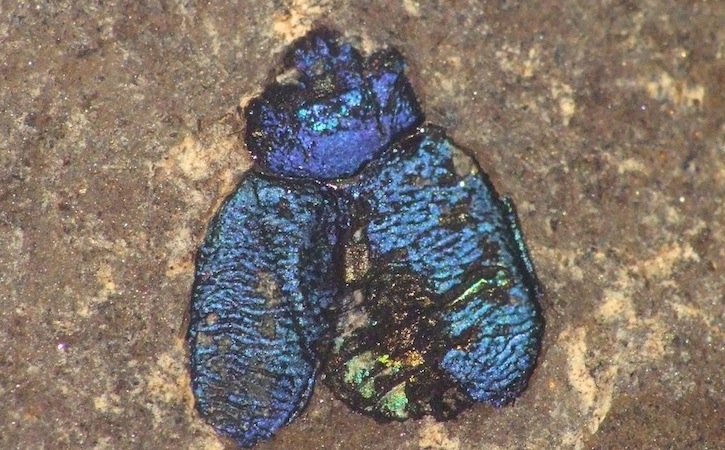2013 Press Releases
Palaeontology’s biggest mystery

A team led by UCC’s Dr Maria McNamara is contributing fossil colour research at the Royal Society Summer Science Exhibition towards solving palaeontology’s biggest mystery. What colour were ancient animals?
Dr McNamara is showcasing the research on the colours of fossil animals at this year’s prestigious Royal Society Summer Science Exhibition in London (running 2nd- 7th July). The exhibition is the UK’s premier forum for public engagement with science and is attended by over 15,000 people each year.
The exhibition involves a highly competitive selection process, with only 22 research groups chosen to host an exhibit this year, including the team led by Dr McNamara, who hails from Clonmel, Co. Tipperary and is a lecturer in Geology in the School of Biological, Earth and Environmental Sciences (BEES), UCC.
The exhibit, titled ‘Prehistoric colours in fossil insects and feathers’, features interactive fossilisation experiments, a high-tech scanning electron microscope, a fossilisation video game, and lots of genuine fossils including rare colourful fossil insects, birds and a feathered dinosaur.
The exhibit team of 18 palaeontologists includes scientists from Ireland, China and the USA. Exhibit co-ordinator Dr Maria McNamara said: ‘Not many people know that fossils can show traces of colour. Our exhibit is a unique opportunity to excite thousands of people by science, especially hot topics in palaeontology such as fossil colour’.
Using modern insects and feathers, McNamara and her team have conducted experiments to measure the effects of pressure, temperature and chemicals on colours to see if and how they change over time. They then examine fossils using powerful electron microscopes and identify which fossils have accurately preserved their colours. This will help scientists identify important changes in the evolution of colour and how it was used by animals in the past.
Prof. John O’Halloran, Head of BEES, said: ‘This exhibit will create a lasting positive impression of science on the general public, attracting future scientists, and will raise the profile of scientific research at UCC’.
UCC students and the broader community in Cork can interact with the exhibit first-hand at events based in Cork later this year, with potential venues including the UCC Open Day in October or the Discover Science Festival in November.
All of the educational materials associated with the exhibit can be downloaded for free at http://sse.royalsociety.org/2013/exhibits/prehistoric-colours/. The website also features the fossilisation video game, video interviews, and links to the exhibit blog.
